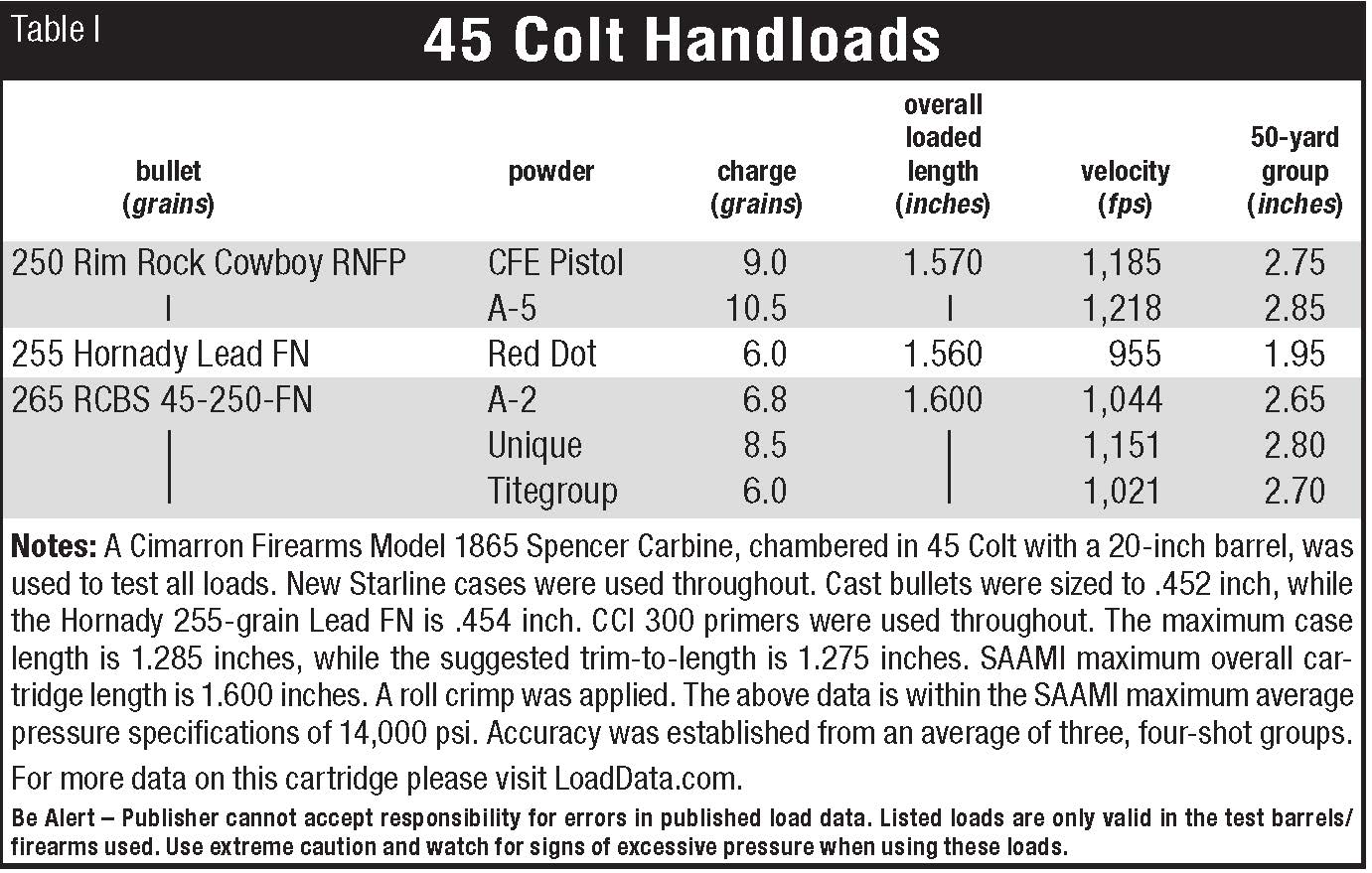Mostly Long Guns
Cimarron 1865 Spencer Carbine 45 Colt
column By: Brian Pearce | July, 25
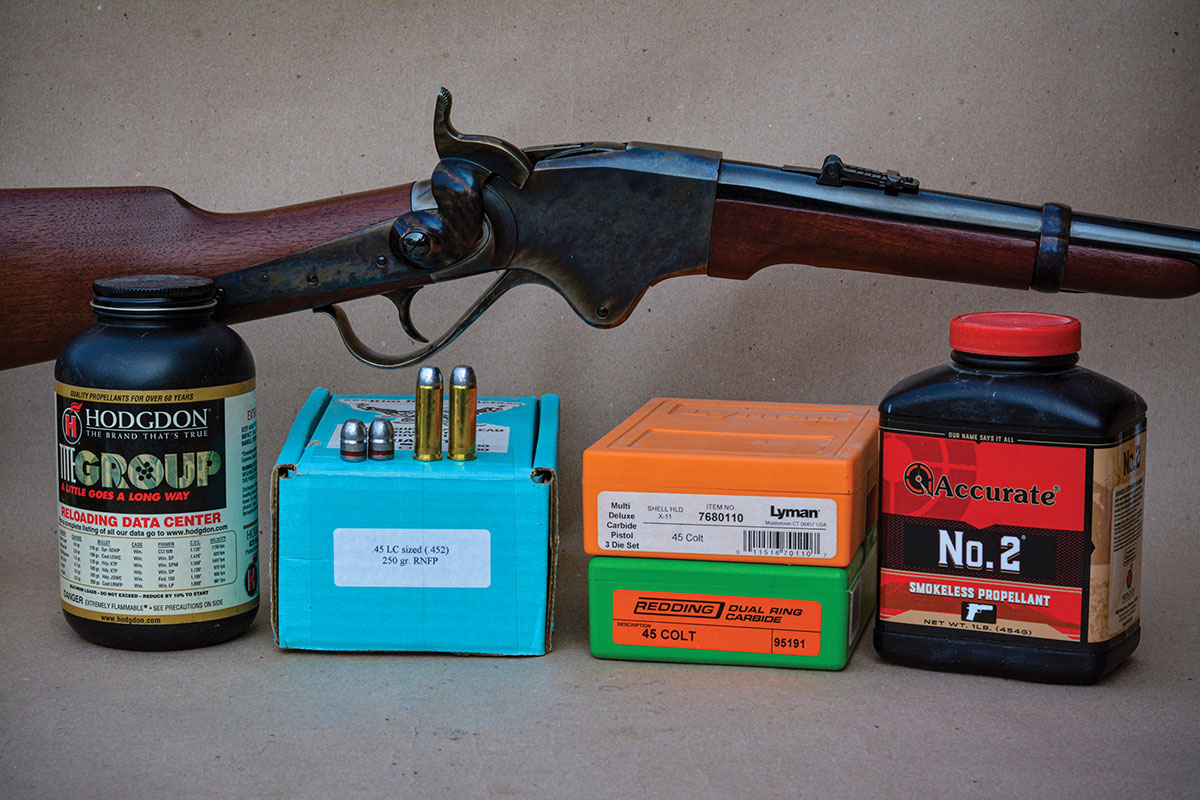
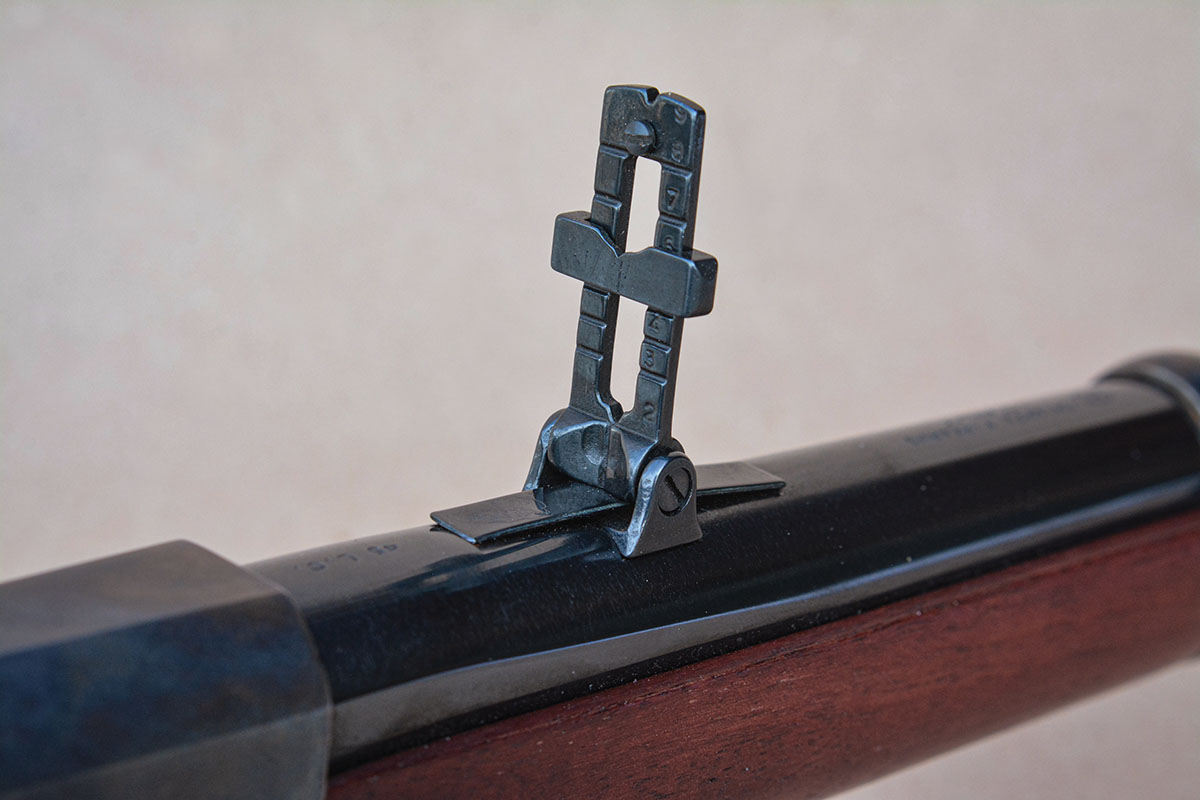
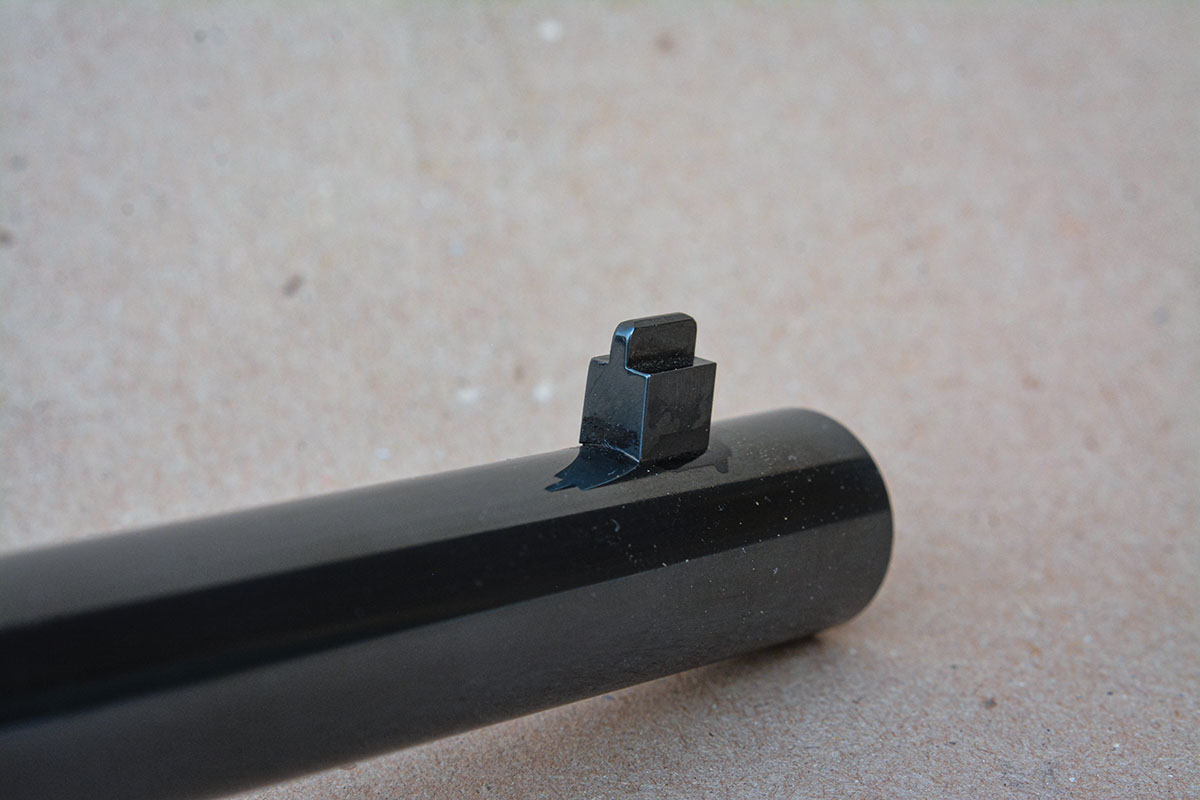
What is probably most significant about the Spencer is that it holds the title of being the world’s first military metallic cartridge repeating rifle. Production began in 1860, with approximately 200,000 units produced by the Spencer Repeating Rifle Company and the Burnside Rifle Company through 1869. The cost per unit was $40. The Spencer was adopted by the Union Army during the Civil War, and it was also adopted by the U.S. Navy, where it was used extensively by the cavalry. The militaries of at least 15 different countries also adopted the Spencer, including Canada, France, Japan, Brazil, Argentina, Chile, Mexico and even China! Initially, the tubular magazine held nine cartridges, but this was soon changed to seven. The carbines had 20- and 22-inch barrels, while the rifle was 30 inches, but other lengths could be special ordered. The 56-56 contained a .52 caliber (although pulled sample bullets measured .540 to .555 inch) 350-grain bullet pushed with 45.0 grains of black powder, which was a potent load at normal distances. The rate of fire was tested at 20 rounds per minute by the average soldier, which was a
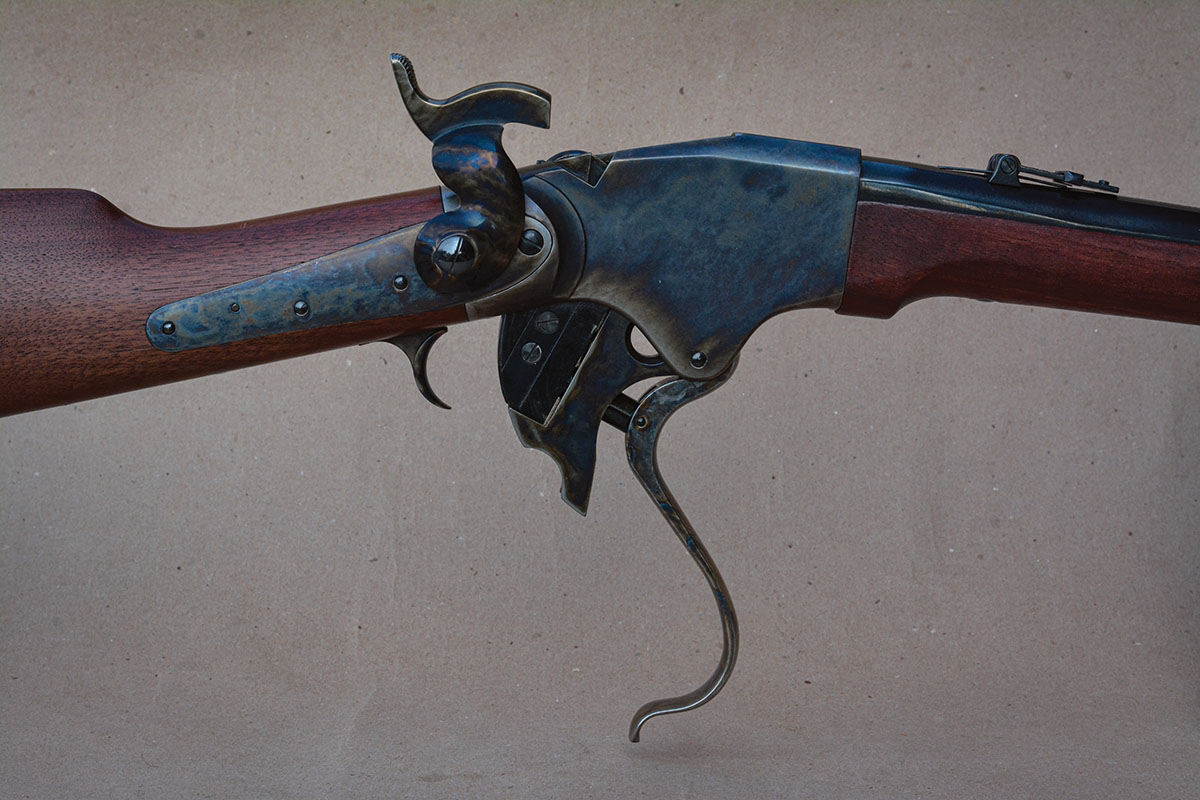
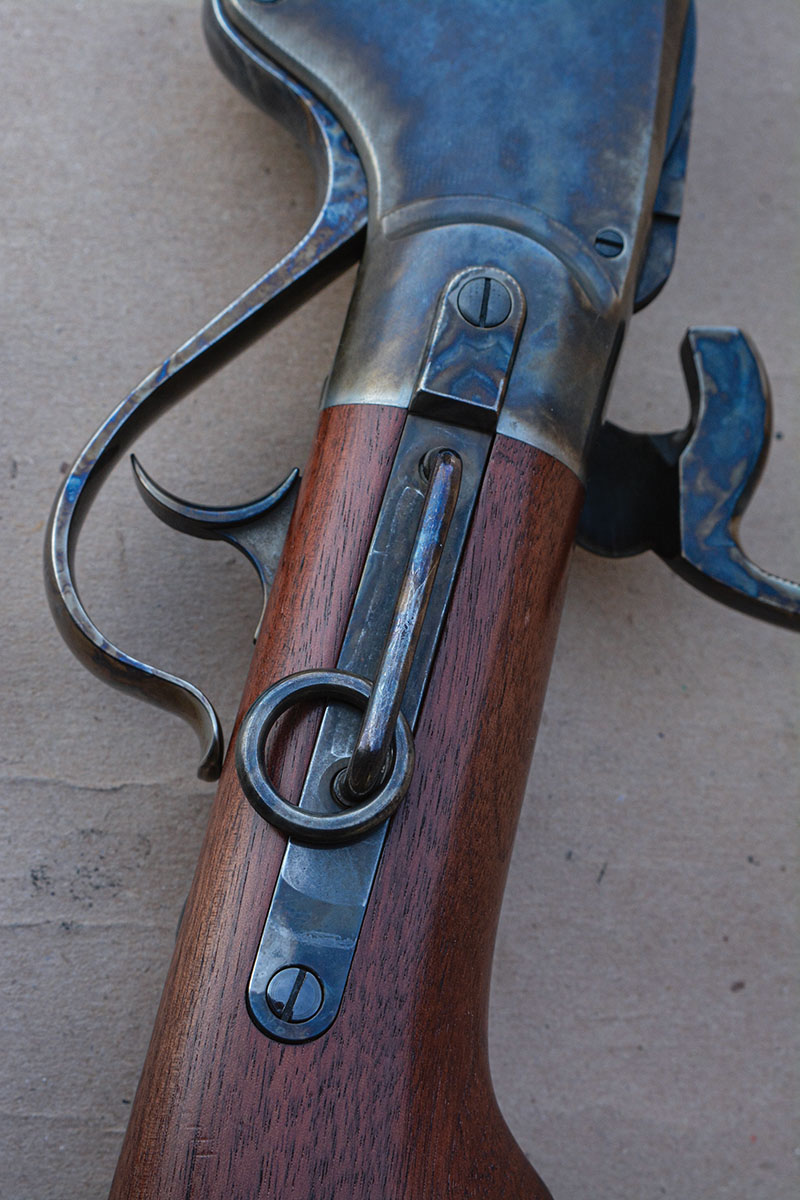
Christopher Spencer’s design is not like any other lever action. A tubular magazine is housed in the stock (see photo), and cartridges are loaded directly into the magazine through the buttstock. The breech is a falling style that is mounted into a carrier. By cycling the lever, the breechblock drops down, followed by the carrier to essentially “roll” downward, which serves to extract the fired case and to then pick up a new cartridge from the magazine. It is very interesting to see the carrier pick up a new cartridge and chamber it when the lever is brought back home. The external side-mounted hammer does not cock during this process; rather it must be manually cocked each time either before or after the action is cycled.
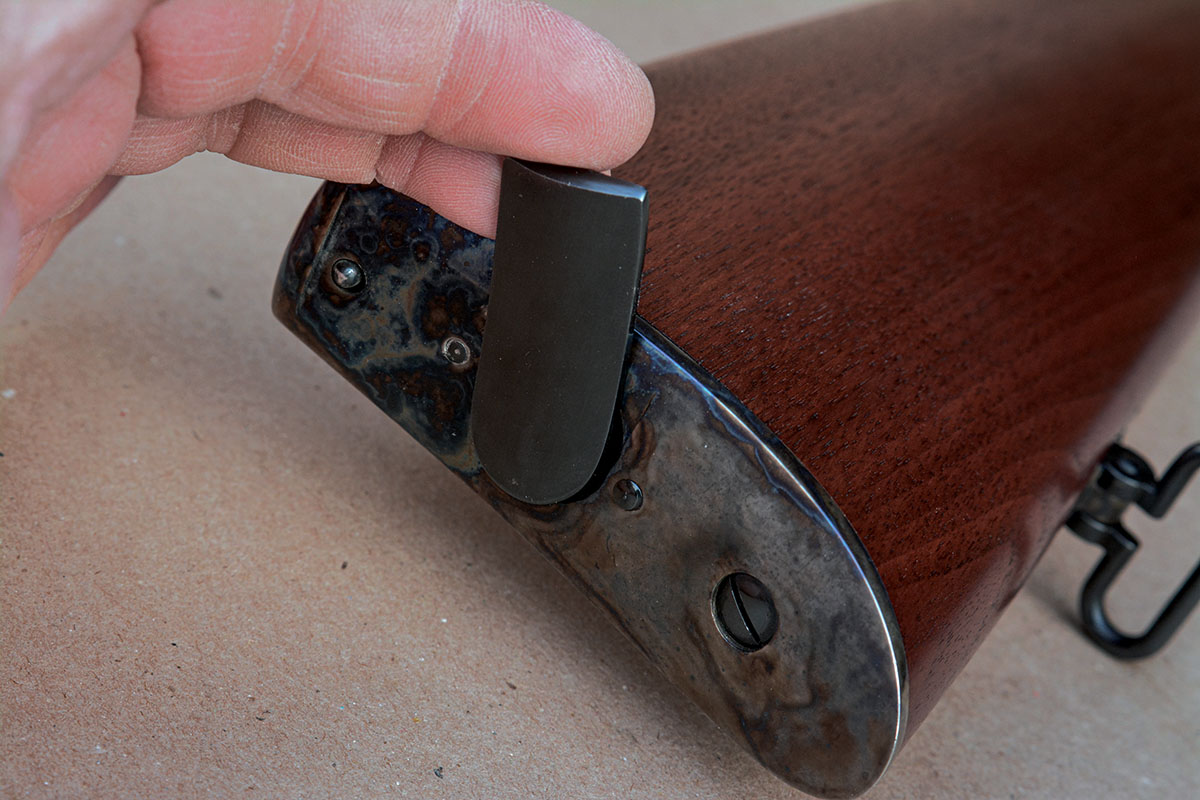
Around 2005, Armi Sport, owned by Chiappa, began producing a Spencer reproduction rifle chambered in 56-50 Spencer center fire (a new cartridge at that time) and 45 Colt. I obtained an early version in 56-50 and developed load data using Starline cases. That rifle worked reliably; however, some early guns had specification and quality control problems, but those issues have been corrected.
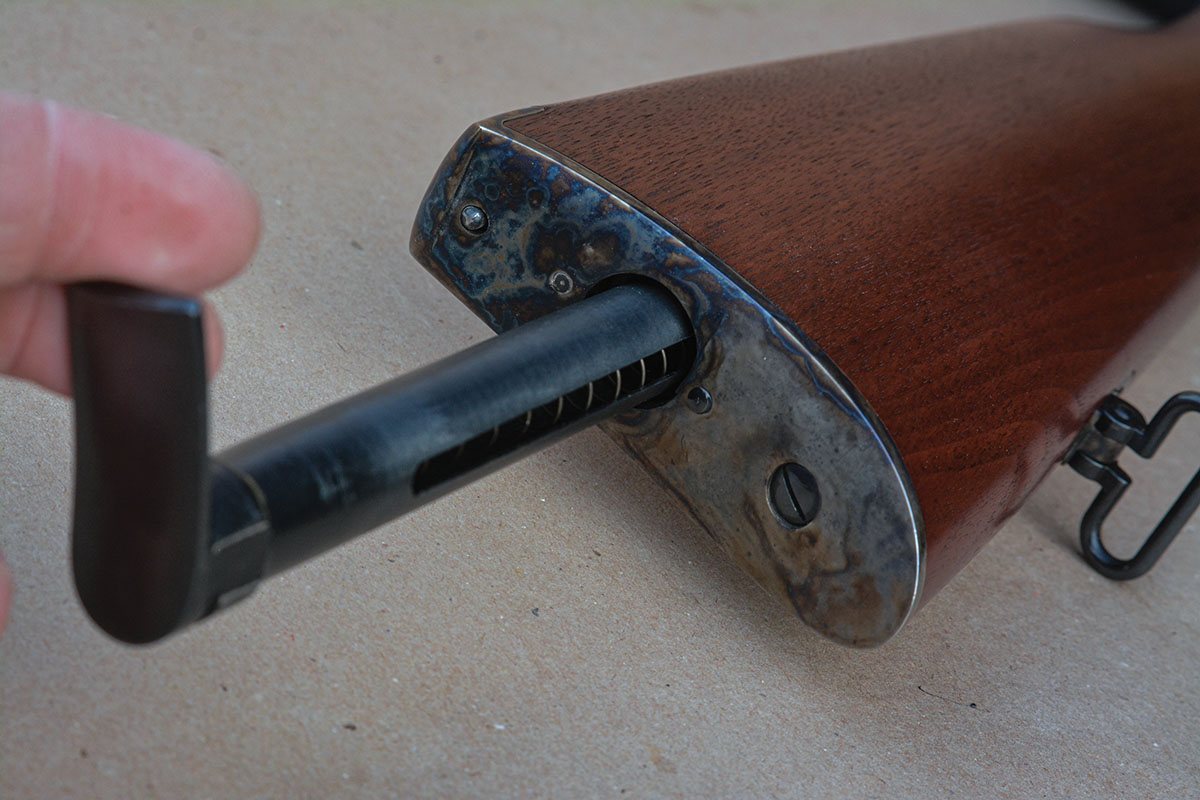
Italian-based Chiappa Firearms has been producing firearms since 1958 that includes a huge variety of reproductions, replicas and modern guns. They supply private-label guns to Cimarron Firearms, Taylors & Company, Legacy Sports and others. The Cimarron imported Model 1865 Spencer shows very good wood-to-metal fit, machining and it functions reliably (more on that in a moment). The receiver, hammer, lever, steel buttplate, saddle ring and forearm band are case colored, while the barrel and breechblock are blued steel. Just like the originals, the gun is easy to disassemble, and only a screwdriver is needed.
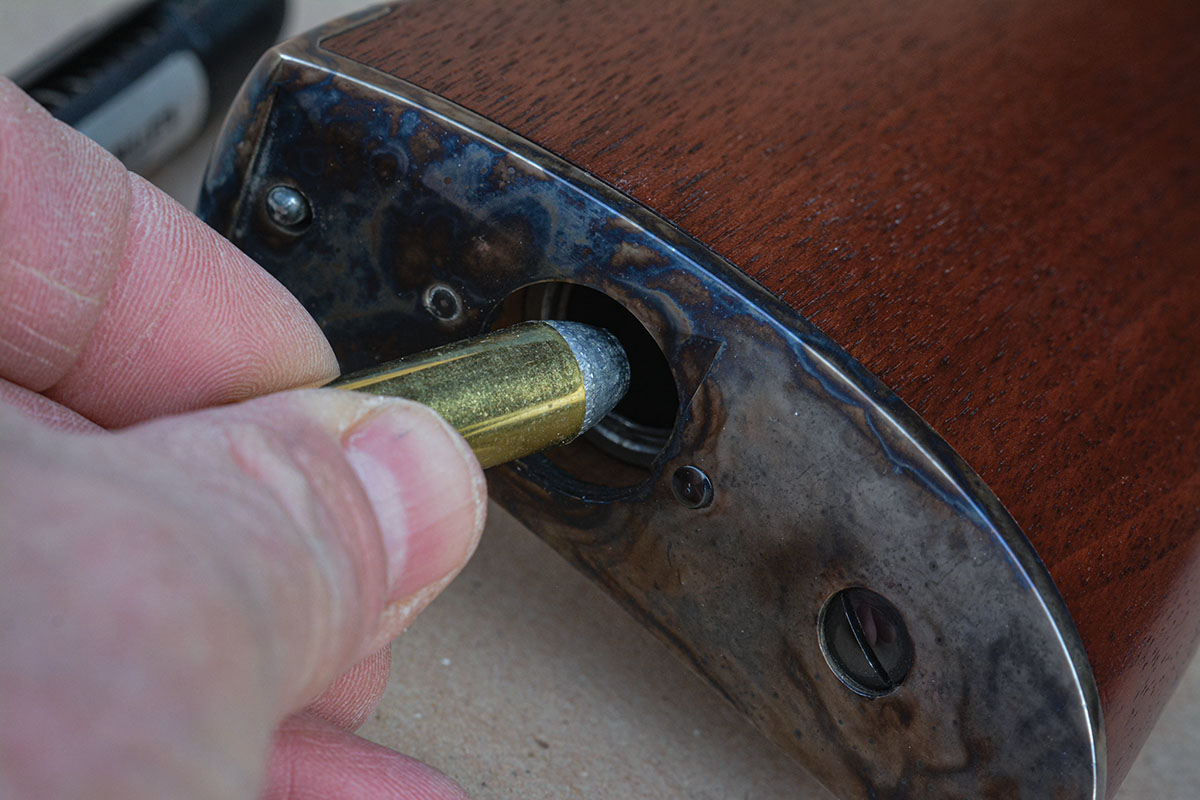
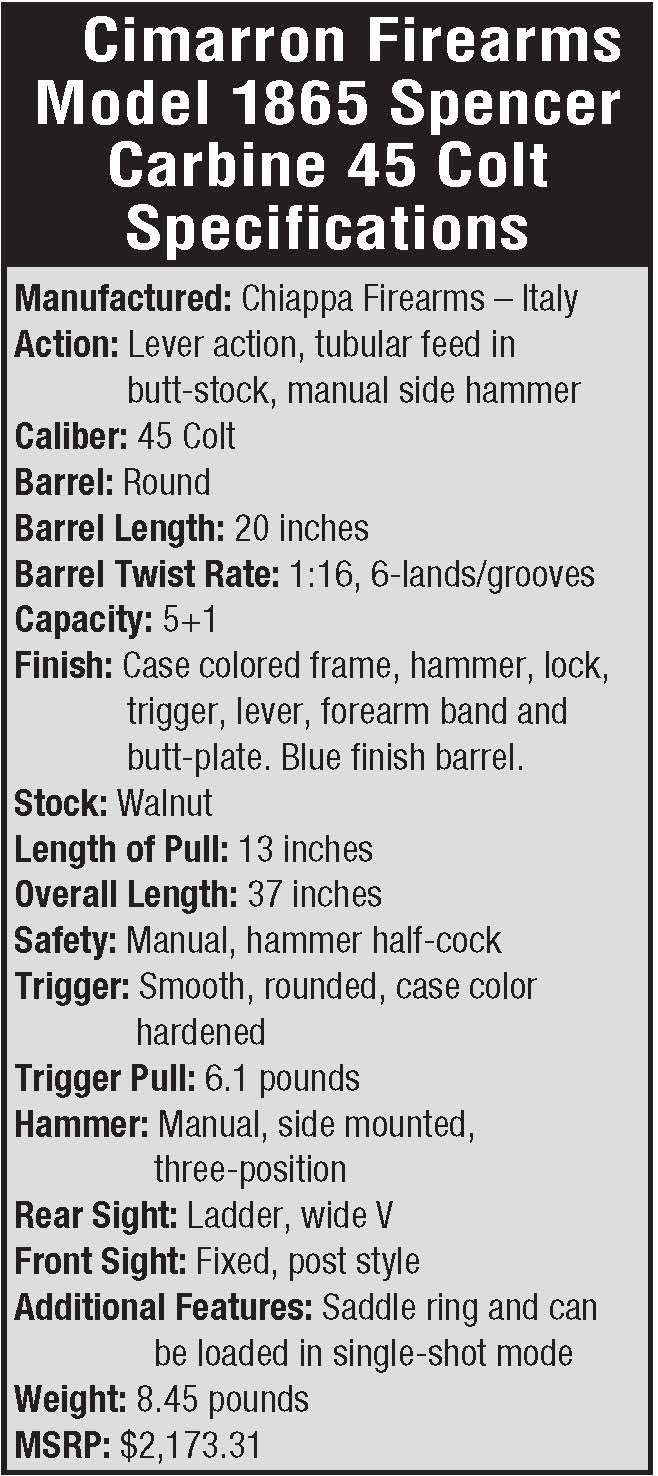
For safety reasons, cartridges should not be dropped into the magazine vertically; rather, the rifle should be held at an angle so that cartridges slide in at a slower speed.
Initial shooting impressions gave the flavor of shooting a period lever-action repeating rifle. It can definitely be placed into the “fun category” of shooting. As indicated, the function was flawless, but if the action is cycled slowly, the case will extract from the chamber but it will not completely clear the action. Tilting the muzzle upwards allows the case to fall clear. Running the action with a bit more authority or speed will readily kick the fired cases from the action, or in some instances the case will clear the chamber and rest on top of the carrier. However, when the action is closed, the fired case is then pushed clear by the breechblock. This description sounds complicated, but it is not. It is just unusual to have a fired case setting directly behind the chamber when the action is closed and still function perfectly!

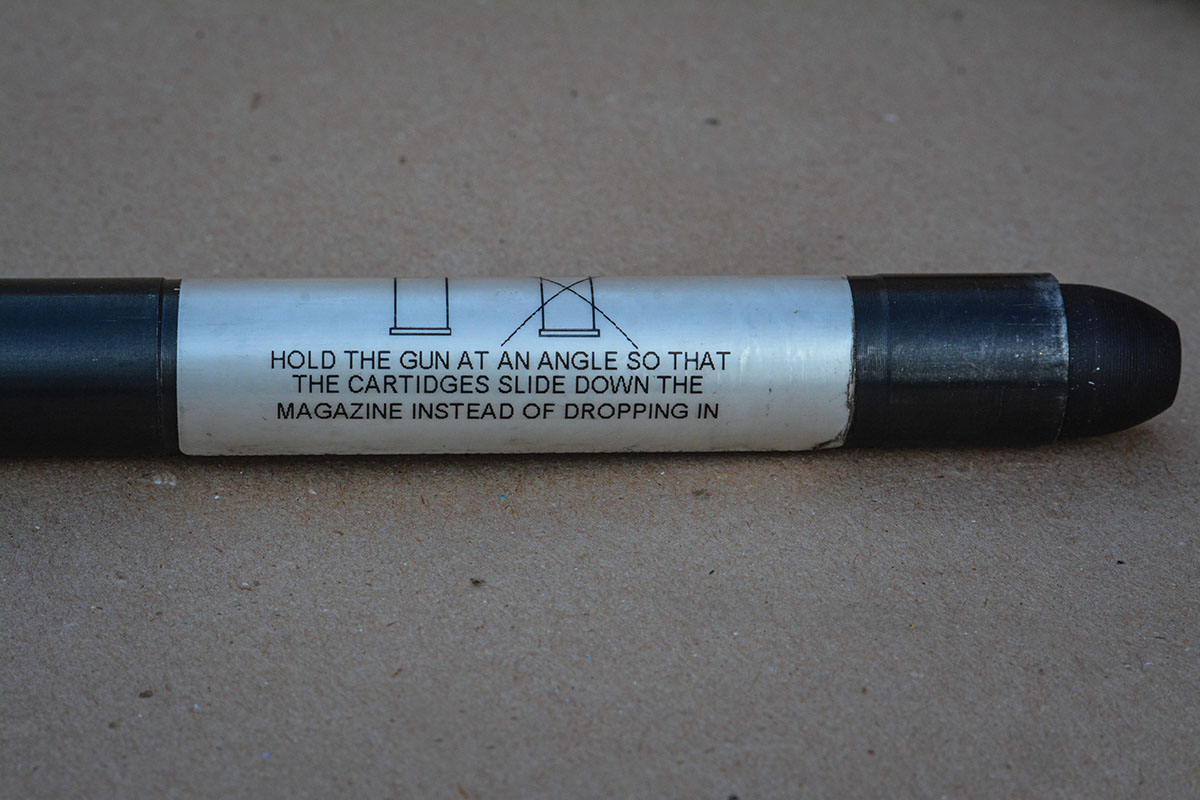
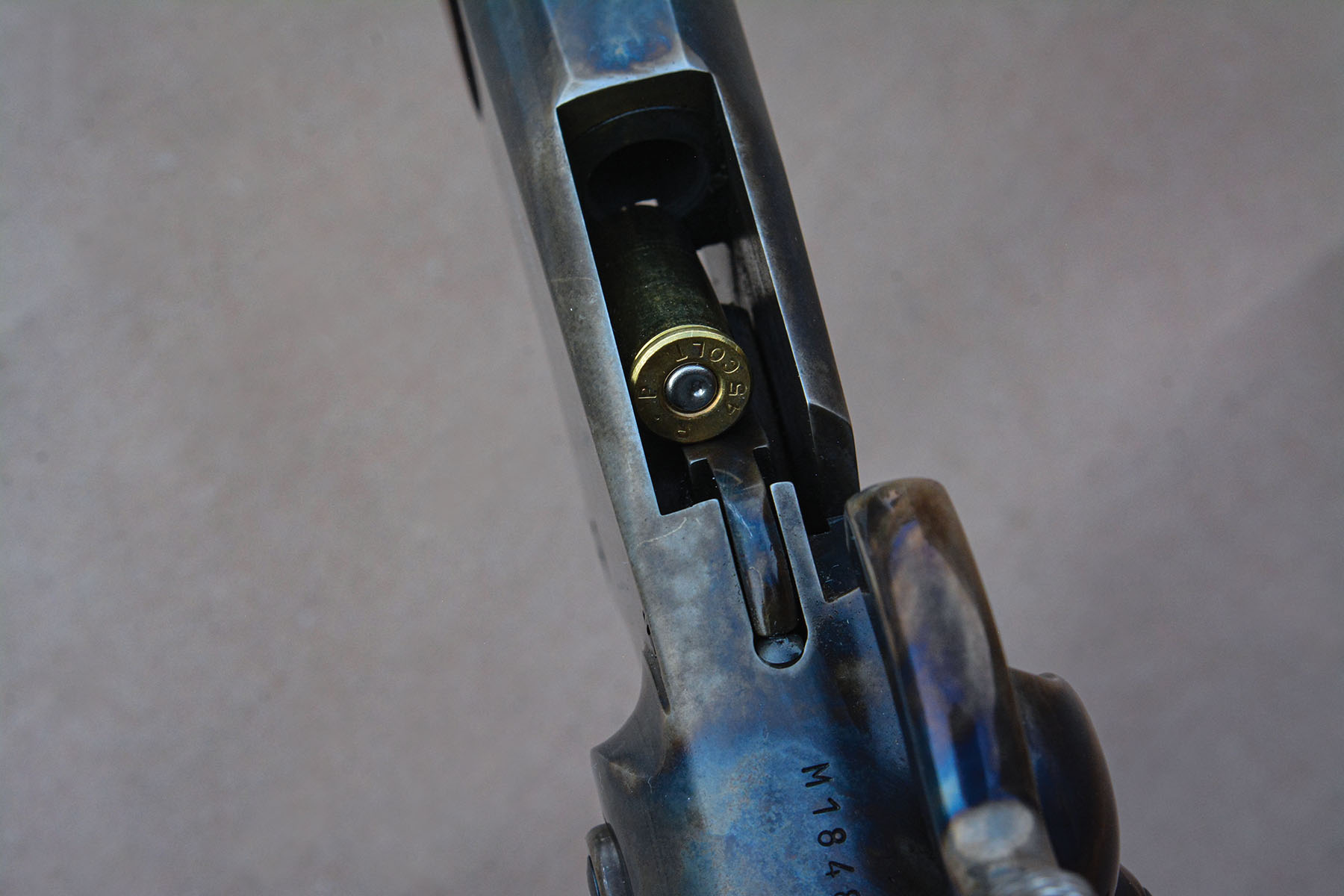

Some will inquire about the strength of this action and to what pressure levels it can be handloaded. To get an accurate assessment would require much more testing than can be done here. For these reasons, it is suggested to stay within the Sporting Arms and Ammunition Manufacturers’ Institute (SAAMI) maximum average pressures of 14,000 pounds per square inch (psi) and keep overall cartridge lengths to industry standards of 1.600 inches to achieve proper feeding.
Using Starline cases capped with CCI 300 primers, the 265-grain cast bullets from RCBS mould 45-250-FN was pushed to 1,044 feet per second (fps) using 6.8 grains of Accurate No. 2 powder. Fifty-yard groups hovered between 2.5 and 3.3 inches. Switching to the 250-grain Rim Rock Cowboy RNFP (old-style) bullet, pushed with 9.0 grains of CFE Pistol, resulted in groups remaining similar. Switching to the .454-inch Hornady 255-grain Cowboy swaged lead flatpoint bullet, pushed to 955 fps using 6.0 grains of Alliant Red Dot powder, groups tightened to just under 2 inches.
Chiappa and Cimarron have certainly captured the feel, look and historic value of the original Spencer lever-action rifle, which was the world’s first military metallic cartridge repeating rifle. However, it is also fun to shoot and much more than just a wall hanger!




